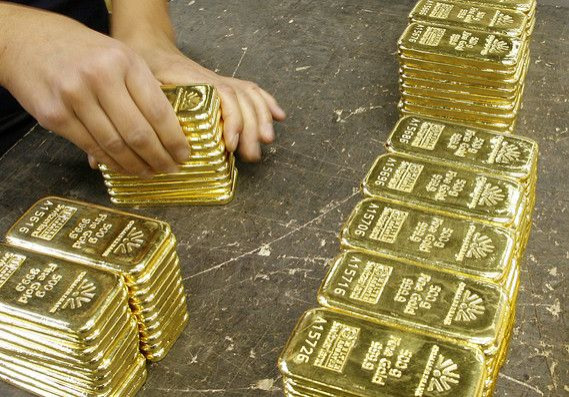Gold Falls To A Near Six-Month Low, And It May Fall Further

The price of gold has fallen to a level not seen since August of last year and could soon carve out an even lower niche as it struggles under several burdens, one of which is the steadily improving U.S. economy.
On Friday gold fell through a key technical price support of $1,625 per ounce and briefly dropped underneath the psychologically important $1,600, leading UBS analyst Joni Teves to write that “sentiment for gold is incredibly fragile at the moment.”
Since early October, the price has fallen more than 10 percent: On Oct. 5 bullion closed at $1,800.60; Friday it closed at $1,609.50. On Monday the metal closed at virtually the same price. The last time gold was this low was in mid-August 2012.
The latest piece of good news on the U.S. economy was the consumer confidence report, which came in strong, thus diminishing the apparent appeal of gold as a haven, said James Steel, an HSBC analyst.
He also said that comments by Sandra Pinalto, president of the Federal Reserve Bank of Cleveland, that the effectiveness of the U.S. central bank’s money printing may be declining also weighed on the yellow metal.
“Gold is historically sensitive to monetary policy comments by members of the Fed. Ms. Pinalto’s comments may have lowered expectations of further monetary policy easing by the Fed,” Steel said.
The recent rally in U.S. stocks also has hurt the price of gold.
“In the face of increasingly positive economic data and good stock market yields, the zero returns of gold and silver are looking more and more unattractive,” David Govett, head of precious metals at Marex Spectron Group in London, told Bloomberg News. “Gold has been meandering aimlessly for a while now and needed a move one way or the other to wash out a lot of stale positions. We have seen the return of the Asian market and some physical buying, albeit light.”
Gold’s price also has struggled as demand from the world’s two top gold-buying countries has weakened. In China, the run-up to the Lunar New Year holiday, which ended Sunday, has curbed physical demand in the world’s second-biggest gold buyer.
In India, meanwhile, demand for gold is being hurt by the government’s expected increase in an increase in import fees.
Indian imports of gold rose 23 percent year-over-year in January, to 100 metric tons, an 18-month high, according to the Bombay Bullion Association, as importers stocked up ahead of the anticipated duty hike. The BBA said concerns are mounting that the government may take further action to curb imports when it announces its budget for the fiscal year … on Feb. 28.
China, meanwhile, remains a key to the short-term direction of gold price movement.
“This week, though, investors in China return with a strong desire to pick up metal at cheaper prices, with turnover on the (Shanghai Stock Exchange) surging to an all-time high of nearly 30 metric tons,” Teves said in a client note.
“This should help calm some of the uneasiness, but unless there is a strong fundamental upside catalyst, gold is likely to struggle, and a move below $1,600 could not be ruled out with certainty at this stage."
© Copyright IBTimes 2024. All rights reserved.






















